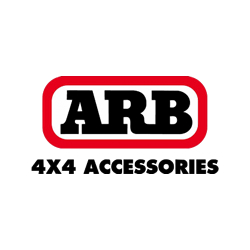4WD’ing with an Automatic Gearbox
At the last meeting a friend asked what it’s like to drive a 4wd with an auto box, and if there were any issues to watch out for. Now I’ll admit that this has become a bit of a pet subject for me since I bought a Patrol with an auto box several years ago. I had owned a Falcon with an auto, but never driven an auto in the bush before that. I wasn’t especially looking for one when I was bought the GQ – it just came up at the right time and the right price.
To start – what are the advantages of an auto in the bush?
· Always in the right gear (well almost always).
· Never miss a gear-change.
· Smooth changes without loss of inertia and forward motion (great on sand).
· Makes hill starts a breeze.
· Makes it easier to crawl over rocks and obstacles.
· Reduces shock loading on other transmission components such as uni-joints and CV joints.
· Allows left-foot braking – excellent where the going gets a bit technical.
And the disadvantages?
· Auto vehicles often have taller gearing which is a disadvantage when descending a steep slope (this was a real issue for me with the GQ).
· Less engine braking.
· Slightly more brake wear.
· Slightly higher fuel consumption.
· Prone to high operating temperatures in tough going.
· Hard to start with a flat battery.
For me the biggest issues were the tall gearing and the high operating temperatures. I solved the first problem by fitting “rock-crawler” gearing in the transfer case which gave an overall 83% reduction in the low range gearing. Now my first gear is another gear lower than you’d normally expect low-first to be. That also means I run out of top gear pretty quick, and often change back to high range where others are content to stay in low. It’s a nuisance in the desert but great in the mountains. Horses for courses.
The problem of high gearbox operating temperatures was more difficult to solve. Auto boxes have a thing called a torque converter (TC) that acts like a clutch. It works like a pair of fans immersed in a fluid. The engine drives one fan, and the spinning induces turbulence in the fluid that “encourages” the second fan to spin. In the lower gears the TC is always allowing a certain amount of slippage which smooths out the gear changes and the on-off throttle variations. But this TC slippage also generates a lot of heat. In top gear the TC is able to lock up (eliminate the slippage) after the car reaches a certain speed. For the GQ this is about 70km/h, so it only comes into effect on good roads. When the TC is locked the auto box runs very cool.
How do I know the operating temperature? I have an after-market temperature gauge so I can monitor the gearbox operating temperature. The gauge reads up to 150 degrees Celsius, at which point the expert advice is to stop and let the gearbox cool down or you’ll damage the gearbox. I have seen the gauge on my gearbox reach this temperature twice during relatively easy climbs out of deep valleys, in the lower gears using high range. Most cars have a warning light for gearbox overheating – mine didn’t come on when the gauge reached 150 C. The problem with a warning light is that it only comes on when you already have a severe problem, and you might not be able to just pull over and stop. A gauge will let you know that a problem is developing, and you can act accordingly.
Now imagine that easy climb out of a deep valley, in high range, something like the climb from Tom Groggin up to Dead Horse Gap near Thredbo. The car will be spending most of the time in 2nd and 3rd gear, and the TC is slipping, and generating large amounts of heat. Frequent overheating will cook the automatic transmission fluid (ATF), breaking down its ability to properly lubricate and cool the gearbox (sniff the gearbox dipstick to check for a burnt smell). Where is all that heat going? How can I get rid of it?
The GQ (and most other auto vehicles) has a form of external cooler that simply passes a length of tubing through the tanks in the normal radiator that cools the engine. The auto box pumps the ATF through this tubing, and when the gearbox gets hot it dumps heat into the radiator. If your engine radiator has plenty of cooling capacity and you don’t have an overheating engine, that might be sufficient. If you’ve owned a GQ you’ll know that they can be prone to running hot. With my auto gearbox dumping its excess heat into the engine cooling system the problem just got worse. The second problem (or rather, risk) associated with this form of gearbox cooling is that it is possible for the tube carrying the ATF through the radiator to corrode or crack, which leads to engine coolant contaminating the ATF, which can also damage a gearbox very quickly.
Part of the solution to the overheating issue is to fit an external cooler with much larger cooling capacity, separate from the radiator. I fitted a 30-row cooler about 25cm square in size, and plumbed it in without using the tubes that ran through the radiator, to get away from the possible contamination issue. If you have a new vehicle still under warranty you’ll want to plumb the additional cooler in series with the original cooler to avoid warranty issues. If you are towing a heavy trailer or a caravan a big external cooler should be mandatory.
For me the other part of the solution was to tackle the heat problem at the source – the slipping torque converter. In the GQ the TC will only lock up when in top gear and above about 70km/h. (I’m not sure if this applies to all auto 4WDs.) On the ‘net I learned that it is possible to install wiring and switches to allow the driver to manually lock the TC in 2nd and 3rd gear (but not in 1st without further modifications). This was done in such a way that the manual lockup is cancelled when the driver applies the brake. Without this the engine would stall when coming to a stop, just like a manual car if you forget to depress the clutch (we auto drivers do that occasionally!). With the TC manually locked the gearbox will still change up and down as required, but not as smoothly unless I pay careful attention to the throttle, lifting off during the change. Locking the TC also drops the engine speed by a couple of hundred revs, and often gives me a better gear for climbing especially when towing the trailer. In practice I use the manual lockup when I’m in a situation that doesn’t require frequent gear changes and I’ve manually selected either 2nd or 3rd gear for that long steady climb. I’ve often seen the gearbox temperature drop 20 degrees in about two minutes after engaging the TC lockup.
Even if you don’t have a TC lockup over-ride switch, keep in mind that with a transfer case you have a wide range of gear ratios available to you. If the gearbox is overheating in high range, you might be able to swap to low range and run in top gear, which allows the TC to lock up and run cooler. For many vehicles low 4th gives an overall gear ratio that sits between 2nd and 3rd in high range, which might be the ideal gear for that long climb out of that deep valley especially if you are heavily-loaded or towing. If you can unlock your front hubs (or if you have an unlocked centre differential) you can even use this on a sealed road.
So – to get back to answering my friend’s question: yes there are some things to watch out for, primarily the overheating problem that can arise if you are towing or climbing steep hills in the lower gears. While driving an auto can be very relaxing and carefree, keeping your auto healthy requires a little awareness and vigilance. A good aftermarket temperature gauge is essential, for without it you won’t know if you have a problem until it’s too late. If you are towing, a good external auto gearbox cooler (the largest you can fit) will probably be essential. And if you can fit it and you have the inclination to use it, an over-ride switch to let you manually lock up the torque converter in the lower gears will give you more control over the behaviour of the gearbox and help avoid overheating.
Chris Nicholls.










